Biblical prophecy unveils 'The Beginning of Sorrows' as a mysterious prelude to end times, sparking fascination and debate among scholars and believers.
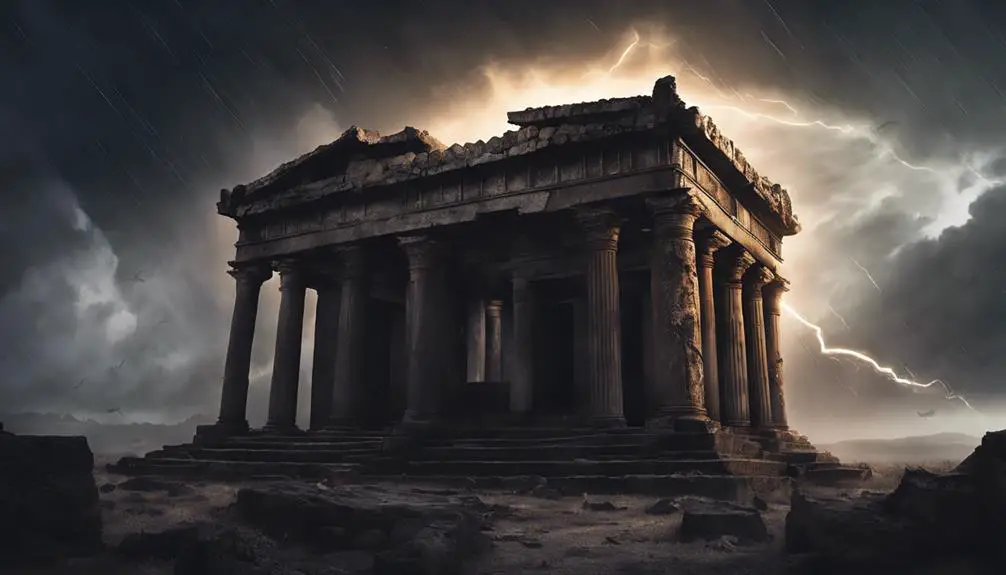
The Beginning of Sorrows in the Bible
Have you ever stood at the edge of a mysterious forest, peering into the shadowy unknown, wondering what secrets lie hidden within?
The 'Beginning of Sorrows' mentioned in the Bible is much like this forest, a profound and complex topic that beckons you closer with its intriguing mix of prophecy, symbolism, and historical context.
You're about to embark on a journey through biblical origins and interpretations that have perplexed scholars and believers alike for centuries. But beware, for as you peel back the layers of signs and symbolism, you may find yourself confronted with questions about modern relevance and the future that are as compelling as they are challenging.
Key Takeaways
- 'The beginning of sorrows' is a period marking tribulations preceding the end times, as described in the New Testament.
- It encompasses symbolic events like earthquakes and famines, indicating divine intervention in critical human epochs.
- Interpretations of the phrase have historically varied, influencing both theological debates and cultural expressions.
- The concept remains relevant in addressing contemporary global challenges, providing a framework for understanding and navigating modern crises.
Biblical Origins and Context

The phrase 'the beginning of sorrows' originates from the New Testament of the Bible, specifically within the discourse on the end times found in the synoptic gospels. This terminology is steeped in prophetic language, serving as a precursor to events that are said to precede the end of the world as known in Christian eschatology. You'll find that the use of such language isn't arbitrary but deeply rooted in the cultural and historical context of the time.
Analyzing this phrase requires an understanding of the cultural influences at play when the texts were written. The authors of the synoptic gospels lived in a period of turmoil and hope, where the promise of a Messiah and the coming kingdom of God was intertwined with the reality of Roman occupation and societal upheaval. This context is crucial for grasping the full meaning behind 'the beginning of sorrows.' The prophetic language used here reflects a common method of the era for conveying messages of warning and hope. It's a linguistic bridge between the divine and the earthly, crafted to resonate with the experiences and expectations of its initial audience.
Signs and Symbolism
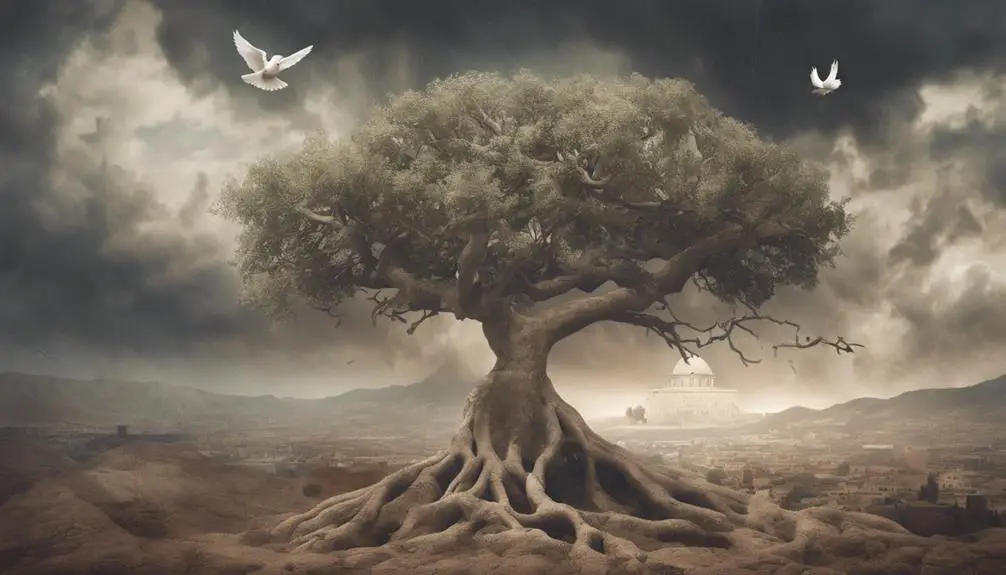
Understanding the cultural and historical backdrop now paves the way for an exploration of the intricate signs and symbolism that the phrase 'the beginning of sorrows' embodies within biblical prophecy. This terminology, deeply rooted in scripture, is often associated with a series of events that signal a period of tribulation and transformation on Earth. Central to this are natural disasters and celestial events, which serve as potent symbols of upheaval and change.
Natural disasters, such as earthquakes, famines, and pestilences, are frequently cited within biblical texts as precursors to more significant spiritual shifts. These calamities aren't just literal phenomena but are imbued with symbolic meaning, representing divine intervention in human affairs and a call for repentance and renewal.
Similarly, celestial events, like eclipses, blood moons, and unusual alignments of stars and planets, are laden with symbolism. In biblical prophecy, these phenomena are often interpreted as signs from the divine, heralding the commencement of crucial epochs in human history. They're seen as cosmic indicators, marking moments when the divine will intersects with the temporal world, guiding humanity towards a deeper understanding of its place within the divine plan.
Historical Interpretations
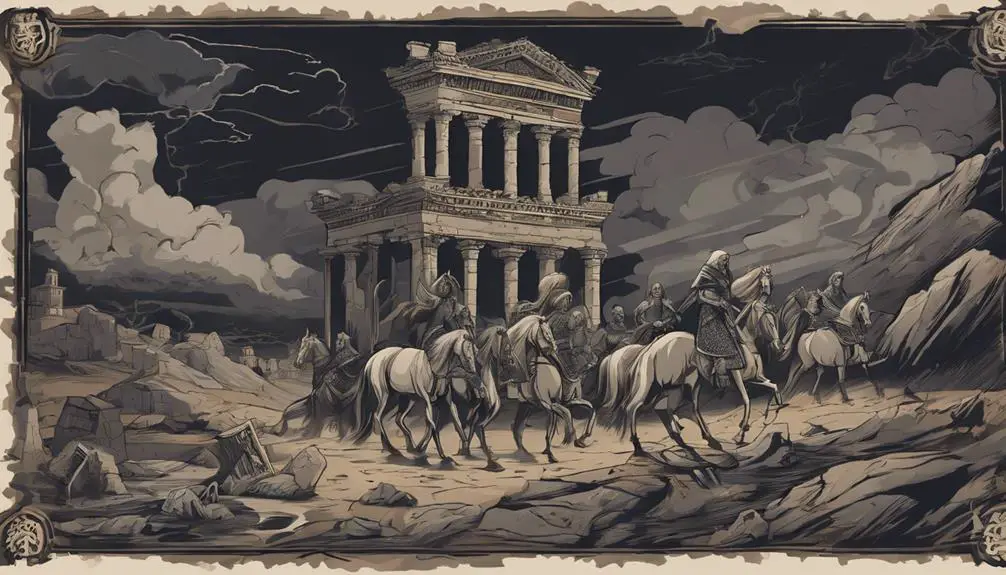
Throughout history, scholars and theologians have debated the interpretations and implications of the 'beginning of sorrows,' analyzing its roots and manifestations within different cultural and historical contexts. You've seen how these discussions haven't only shaped theological debates but also left a significant mark on the cultural impact of religious texts. The term itself, originating from Biblical prophecy, has been scrutinized for its eschatological significance, leading to various perspectives on its meaning.
Theological debates have often centered around the precise nature of these sorrows, questioning whether they refer to spiritual, physical, or societal tribulations. Historically, these discussions have influenced the way communities understand and react to perceived signs of the times, reflecting broader societal anxieties and hopes. You've noticed that interpretations have varied widely, from literal to metaphorical, each bearing its own set of implications for faith and practice.
Moreover, the cultural impact of these interpretations can't be understated. They've permeated art, literature, and public discourse, demonstrating the 'beginning of sorrows' as a concept that transcends religious boundaries. You've observed its role in shaping collective memory and identity, proving that theological debates aren't just academic but deeply woven into the fabric of society.
Modern Relevance
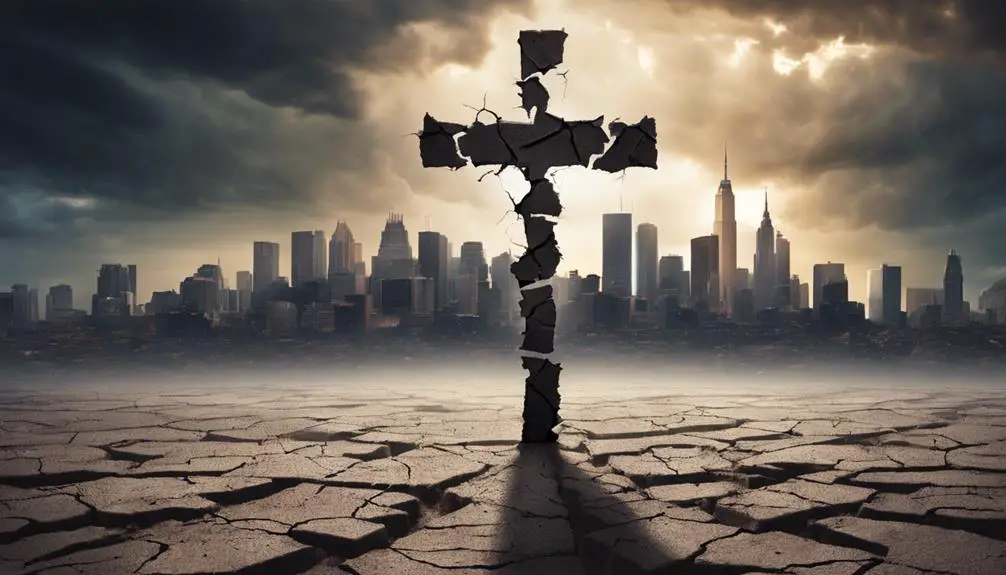
In today's rapidly evolving society, discussions about the 'beginning of sorrows' have gained renewed significance, reflecting contemporary global challenges and anxieties. This concept, once confined to theological discourse, now resonates with a wider audience as it mirrors the uncertainties and tribulations of our time. The notion of 'sorrows' transcends religious boundaries, finding relevance in the personal and collective experiences of global crises.
Analyzing the modern relevance of the 'beginning of sorrows', it's crucial to consider:
- The impact of climate change and environmental degradation.
- Economic instability and its effects on communities worldwide.
- The rise of geopolitical tensions and conflicts.
- Public health crises and their implications for societal well-being.
These elements not only underscore the multifaceted nature of contemporary sorrows but also highlight the interconnectedness of global crises and their personal impact. As individuals navigate these challenges, the ancient narrative of the 'beginning of sorrows' offers a lens through which to examine our present circumstances. It prompts a reflection on resilience, adaptation, and the search for meaning amidst adversity. In this way, the concept remains deeply relevant, providing a framework for understanding and responding to the trials of the modern world.
Navigating the Future

Facing the future requires us to critically assess how emerging technologies and societal shifts will shape the evolving landscape of global sorrows. In this journey, you'll find that personal resilience becomes a cornerstone of navigating through these tumultuous times. As you encounter the increasing complexity of the world around you, it's essential to cultivate an inner strength that can withstand the pressures and uncertainties that lie ahead.
Moreover, the rise of new technologies and their integration into everyday life bring about a series of ethical dilemmas. You're tasked with discerning not only what can be done but also what should be done for the greater good. These challenges demand a robust framework for ethical decision-making, one that's flexible enough to adapt to changing circumstances yet grounded in steadfast moral principles.
In this context, your ability to anticipate and respond to ethical dilemmas is as critical as fostering your personal resilience. Together, they form a dual approach to navigating the future, equipping you to face the sorrows and uncertainties with a balanced perspective. As you move forward, remember that your choices and actions contribute to shaping the trajectory of these global sorrows.
Frequently Asked Questions
How Have Different Cultures Outside of Christianity Interpreted or Have Similar Concepts to 'The Beginning of Sorrows'?
Across cultures, you'll find a rich tapestry of myths that echo the concept of a pivotal period of suffering or transformation, similar to the 'beginning of sorrows.' This interpretative diversity showcases how different societies conceptualize a phase of trials or significant change.
Cultural myths often reflect a universal understanding of transition and hardship, illustrating how communities across the globe have grappled with the idea of pivotal moments leading to renewal or revelation.
Are There Any Scientific Theories or Explanations That Align With or Contradict the Events Described in 'The Beginning of Sorrows'?
You're diving into waters where science meets legend, like a fish exploring the ocean's depths. Quantum theories and evolutionary psychology offer lenses to scrutinize events typical of apocalyptic narratives.
While quantum theories mightn't directly contradict these events, they suggest a complex universe beyond simple causality.
Evolutionary psychology, on the other hand, could interpret societal upheavals as reflections of collective human behaviors, rather than foreordained calamities, providing a contrasting viewpoint.
How Has Art and Literature Been Influenced by the Concept of 'The Beginning of Sorrows' Throughout History?
You'll find that throughout history, sorrowful motifs have deeply influenced art and literature. Artistic interpretations of despair and hopelessness, often mirroring existential crises, have been a constant.
These themes resonate with audiences, providing a cathartic experience or deeper existential insight. Analyzing these works, you'll notice a trend where artists and writers use these motifs to reflect on human suffering and resilience, subtly echoing the concept of 'the beginning of sorrows' without directly referencing it.
Can 'The Beginning of Sorrows' Be Connected to Any Specific Environmental or Natural Phenomena Observed in the Past or Present?
You're diving into an ocean of complexity when linking 'the beginning of sorrows' to environmental phenomena.
Historically, cataclysmic events like floods and droughts have been seen as earth's morose narrative.
Today, these connections are more scientifically scrutinized, focusing on climate adaptation and societal resilience.
This analytical approach reveals how societies interpret natural disasters as ominous precursors, urging a deeper understanding of our environment's fragility and our collective capacity for resilience.
What Psychological Effects Does Studying or Believing in 'The Beginning of Sorrows' Have on Individuals and Communities?
When you delve into concepts like 'the beginning of sorrows,' it's crucial to understand how they impact you and your community psychologically.
Studying these ideas often leads to stress and anxiety, pushing you towards developing coping mechanisms.
It's not just about personal effects; societal resilience is tested as communities collectively navigate these beliefs.
The ways in which you and those around you adapt and respond can offer deep insights into human psychology and group dynamics.
Conclusion
In your journey through the narrative of the 'beginning of sorrows,' you've navigated ancient texts and symbolism, traversing interpretations that span centuries. Like Dante at the precipice of his infernal descent, you stand at the threshold of understanding, poised to reflect on the modern relevance of these prophetic warnings.
As history whispers its cyclic tale, the wisdom within these biblical sorrows offers a lantern in the darkness, guiding us toward a future where foresight might just prevent repetition's shadow.

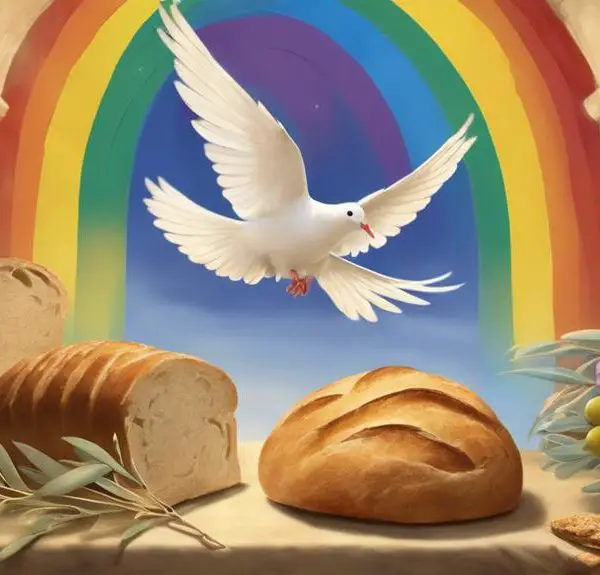

Sign up